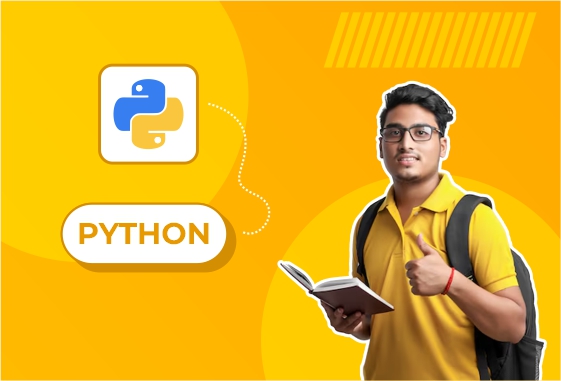
Driver Drowsiness Detection
Project Title: Driver Drowsiness Detection
Objective:
The primary objective of this project is to develop a real-time driver drowsiness detection system that can monitor the driver’s alertness level and warn them if they are falling asleep or becoming drowsy. This system aims to enhance road safety by preventing accidents caused by driver fatigue, a significant issue in road traffic incidents.
Key Components:
Data Collection:
Dataset sources: A variety of datasets can be used to train the model. Common datasets include DD (Driver Drowsiness) dataset, Yawn Detection dataset, or FER2013 (Facial Expression Recognition) dataset for facial features.
Sensor data: Depending on the approach, input data may include video footage (capturing the driver’s face and eyes) or sensor readings (such as steering wheel movement or vehicle speed).
Attributes: The dataset typically contains images or videos of drivers, along with labels indicating whether the driver is drowsy or not. Labels may also include information like yawning, eye closure, and head movements.
Data Preprocessing:
Image preprocessing: If using facial recognition techniques, images or video frames must be preprocessed for consistent size, grayscale conversion, and noise reduction.
Face detection: Faces need to be detected from video or image data, typically using a pre-trained model like Haar Cascades or Dlib to locate the face within a frame.
Feature extraction: Extract facial features such as eye aspect ratio (EAR), blink rate, and mouth aspect ratio (MAR), which are crucial indicators of drowsiness.
Time series processing: For real-time systems, temporal information is important. Hence, sequential data processing of frames to capture changes in facial expressions and movements over time is necessary.
Model Selection:
Traditional Machine Learning models:
Random Forests: For classifying whether the driver is alert or drowsy based on extracted features (e.g., blink rate, head tilt).
Support Vector Machines (SVM): For binary classification tasks, where the model predicts whether the driver is drowsy or not based on various extracted facial features.
Logistic Regression: Could be used for binary classification of drowsiness based on continuous features.
Deep Learning models:
Convolutional Neural Networks (CNNs): A CNN-based architecture can be used for facial feature extraction and classification. It can directly learn features from raw images or video frames to predict drowsiness levels.
Recurrent Neural Networks (RNNs) and LSTM (Long Short-Term Memory) networks: Useful for sequential data like video frames, where temporal relationships (eye movements, yawning patterns) need to be considered over time.
3D CNNs: 3D convolutional neural networks can be applied to video data to simultaneously capture spatial and temporal features, which helps track eye and head movements in a more robust manner.
Model Training:
Data splitting: The dataset is divided into training, validation, and test sets (typically a 70-30 or 80-20 split) to ensure that the model generalizes well.
Feature engineering: Key features such as eye aspect ratio (EAR), mouth aspect ratio (MAR), and blink frequency are extracted and used to train the model.
Model tuning: Hyperparameters like learning rate, number of layers, and dropout rate for neural networks, or tree depth and number of estimators for decision trees, are tuned for optimal performance.
Cross-validation: A technique like k-fold cross-validation can be applied to avoid overfitting and ensure the model’s robustness.
Model Evaluation:
Accuracy, Precision, Recall, and F1-score: These metrics are used to evaluate the model’s effectiveness in detecting drowsiness in drivers.
Confusion Matrix: Used to visualize the model’s performance, showing the true positives (correctly detected drowsiness), false positives, true negatives, and false negatives.
ROC Curve: For evaluating the classification performance of the model, especially if dealing with imbalanced classes (e.g., fewer drowsy instances compared to alert instances).
Real-time Implementation:
Real-time face and eye tracking: Once the model is trained, it can be deployed in a real-time system that continuously monitors the driver’s face using a camera.
Drowsiness detection: The system detects the driver’s eye and mouth movements in real-time. If the driver shows signs of drowsiness (e.g., prolonged eye closure, yawning), the system triggers an alert.
Alert system: Alerts can be visual, auditory (e.g., a loud sound or voice), or even physical (e.g., vibrating seat or steering wheel) to notify the driver to take action, such as resting or pulling over.
Applications:
Automotive safety: In modern vehicles, this technology can be integrated into driver assistance systems to enhance safety.
Commercial vehicles: It can be used in trucks or delivery vehicles to monitor drivers over long hauls, reducing the risk of accidents due to fatigue.
Taxi or ride-sharing services: Implemented to ensure the safety of drivers on long shifts.
Transportation fleets: Fleet management systems can integrate drowsiness detection to monitor the condition of drivers and ensure they remain alert.
Challenges:
Lighting conditions: Variability in lighting (e.g., night driving or bright sunlight) can affect the accuracy of facial recognition and eye-tracking.
Driver diversity: Variations in face shape, ethnicity, age, and other factors may affect the model’s generalizability.
False positives: It’s important to minimize false alarms (alerting a driver who isn’t drowsy), which can be distracting or frustrating.
Real-time processing: The system must be fast and responsive, providing real-time feedback to the driver without delay.
Future Work and Improvements:
Multimodal approach: Combine facial recognition with other sensors, such as heart rate monitors, steering wheel sensors, and vehicle speed, for a more robust system.
Adaptive learning: Continuously improve the model as more data is collected during actual driving conditions to handle different environments and driving styles.
Integration with autonomous vehicles: While this project focuses on human drivers, similar systems can be extended to autonomous vehicles for monitoring driver handover moments (from manual to automatic control).
Outcomes:
Reduced accidents: The primary benefit is a reduction in traffic accidents caused by drowsy or fatigued driving, improving road safety.
Increased driver awareness: The system encourages drivers to stay alert, potentially improving their attention levels.
Real-time feedback: Provides immediate warnings to the driver to take corrective action, such as stopping to rest.





